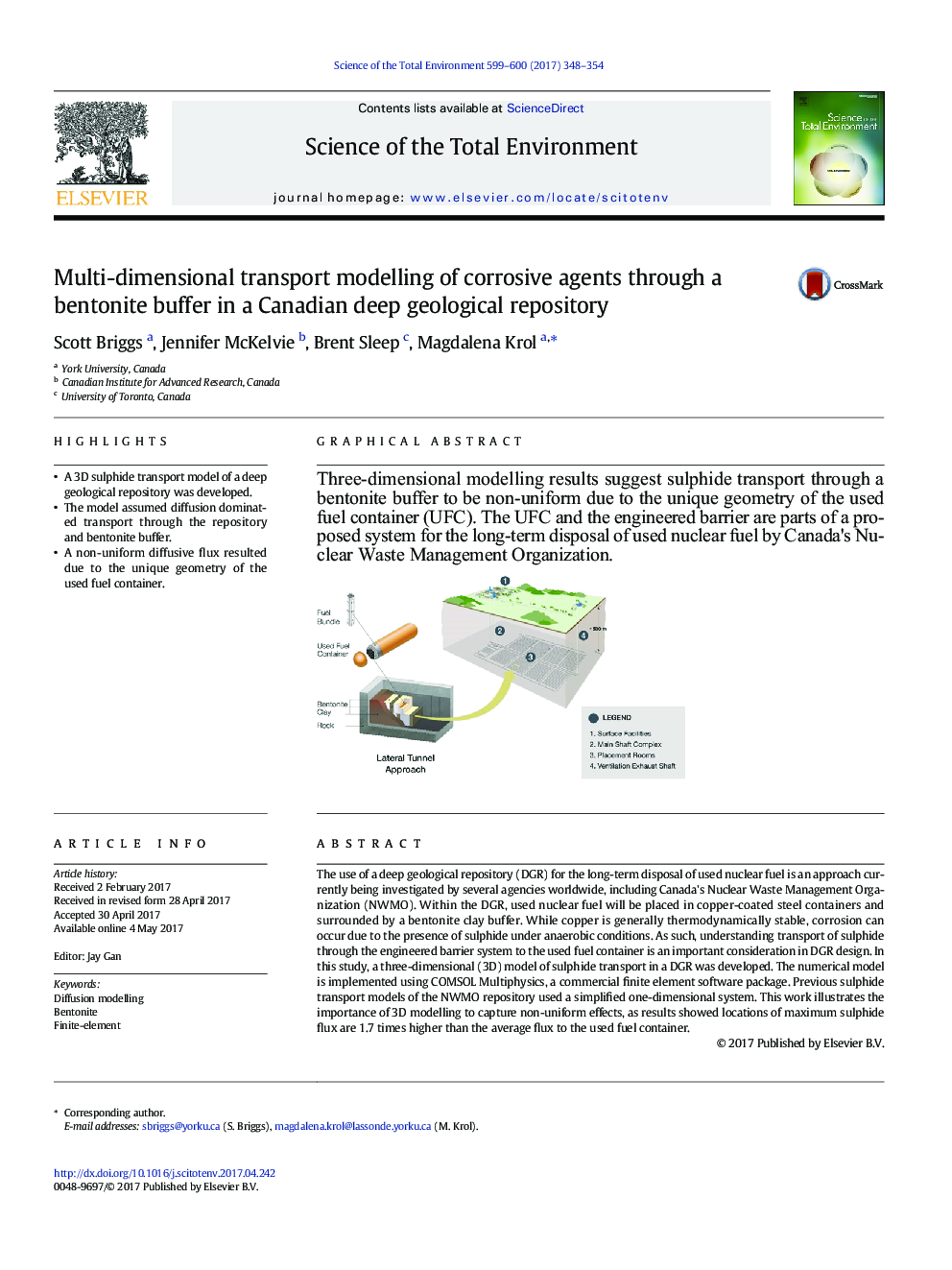| Article ID | Journal | Published Year | Pages | File Type |
|---|---|---|---|---|
| 5750501 | Science of The Total Environment | 2017 | 7 Pages |
â¢A 3D sulphide transport model of a deep geological repository was developed.â¢The model assumed diffusion dominated transport through the repository and bentonite buffer.â¢A non-uniform diffusive flux resulted due to the unique geometry of the used fuel container.
The use of a deep geological repository (DGR) for the long-term disposal of used nuclear fuel is an approach currently being investigated by several agencies worldwide, including Canada's Nuclear Waste Management Organization (NWMO). Within the DGR, used nuclear fuel will be placed in copper-coated steel containers and surrounded by a bentonite clay buffer. While copper is generally thermodynamically stable, corrosion can occur due to the presence of sulphide under anaerobic conditions. As such, understanding transport of sulphide through the engineered barrier system to the used fuel container is an important consideration in DGR design. In this study, a three-dimensional (3D) model of sulphide transport in a DGR was developed. The numerical model is implemented using COMSOL Multiphysics, a commercial finite element software package. Previous sulphide transport models of the NWMO repository used a simplified one-dimensional system. This work illustrates the importance of 3D modelling to capture non-uniform effects, as results showed locations of maximum sulphide flux are 1.7 times higher than the average flux to the used fuel container.
Graphical abstractThree-dimensional modelling results suggest sulphide transport through a bentonite buffer to be non-uniform due to the unique geometry of the used fuel container (UFC). The UFC and the engineered barrier are parts of a proposed system for the long-term disposal of used nuclear fuel by Canada's Nuclear Waste Management Organization.Download high-res image (142KB)Download full-size image
